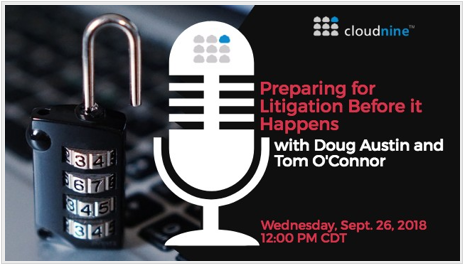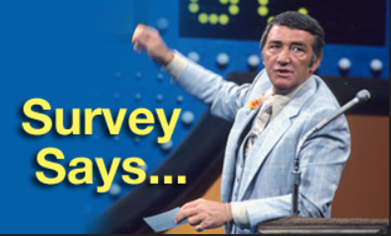Whee! What a Great Event at the Second Annual WiE Legal Technology Showcase and Conference: eDiscovery Trends
As I noted yesterday, the Women in eDiscovery (WiE), Houston Chapter, in partnership with South Texas College of Law and the Association of Certified E-Discovery Specialists (ACEDS), hosted the second annual “Legal Technology Showcase & Conference” yesterday. Here are a few pictorial highlights of yesterday’s conference (with a few comments thrown in).
The conference ran from 8:30am to 4:15pm, with a networking happy hour from 4:30pm to 7:00pm. Both events were at South Texas College of Law in downtown Houston. Sessions were interspersed with networking time of at least 30 minutes in between, which gave plenty of opportunity to catch up with colleagues and old friends. The event was a huge success, with a reported total of 239 attendees (considerably more than last year’s inaugural event). After two years, it may be safe to say that this annual event has already become the most significant eDiscovery conference in the Houston area!
I did not attend the eDiscovery Fundamentals session conducted from 8:30am-9:30am by Scott Lombard who is the Senior Vice President of eDiscovery at JND Legal Administration (I’m sure it was great!). But I did attend the other sessions.
The keynote address (The Future Practice of Law: AI, Blockchain and Quantum Computing) was presented by Shawnna Hoffman, Global Co-Leader of the IBM Cognitive Legal Practice, IBM from 10:00am-11:00am. Shawnna is a co-founder of WiE, with years of experience in legal technology with providers like LexisNexis and Navigant. I took a picture of the room during Shawnna’s keynote address here:
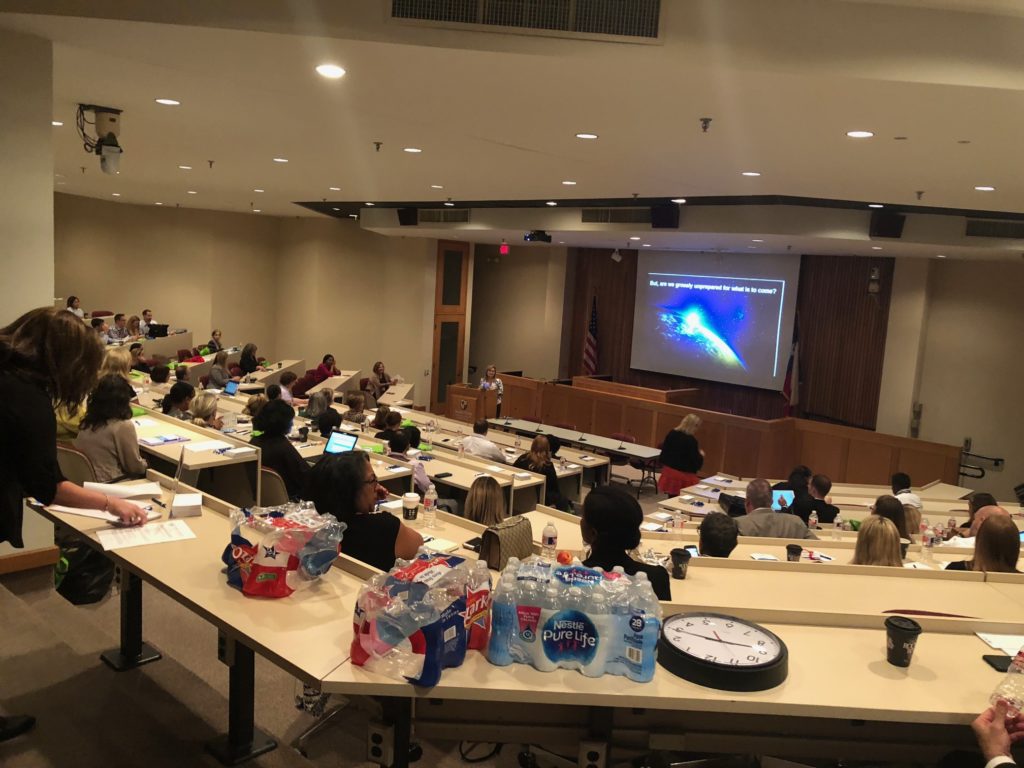
Shawnna did a good job of discussing several aspects of AI, blockchain and quantum computing and related them to eDiscovery and legal technology. One specific example she related regarding Judge Anthony Capizzi in Montgomery County, Ohio where IBM Watson interfaces with the county’s case management system, providing up-to-the-minute summaries of relevant information, patterns for things such as drug use, which help the judge and team understand the ups and downs in the child’s life.
The next session was Data Privacy & GDPR | The Age of the GDPR – A Perspective Four Months In from 11:30am-12:30pm, with Moderator: Karen Bell, Consul General, British Consulate General Houston and panelists Sheryl Falk, Partner, Winston & Strawn; Emily Fedeles, Associate, BakerHostetler; Helen Geib, General Counsel, QDiscovery; Carolyn Southerland, Managing Director, Morae Global; Thom Wisinski, Chief Knowledge Officer, Haynes & Boone.
That panel (pictured below) had a lot of useful information about how things are going four months into GDPR. One of the things they mentioned was the Ticketmaster data breach earlier this year which affected EU users and for which Monzo, a mobile-only bank based in the UK, stated that it had spotted signs of the breach and warned Ticketmaster 2 1/2 months earlier than it was reported by Ticketmaster after around 50 of the bank’s customers reported fraudulent transactions on their accounts. Whoops.
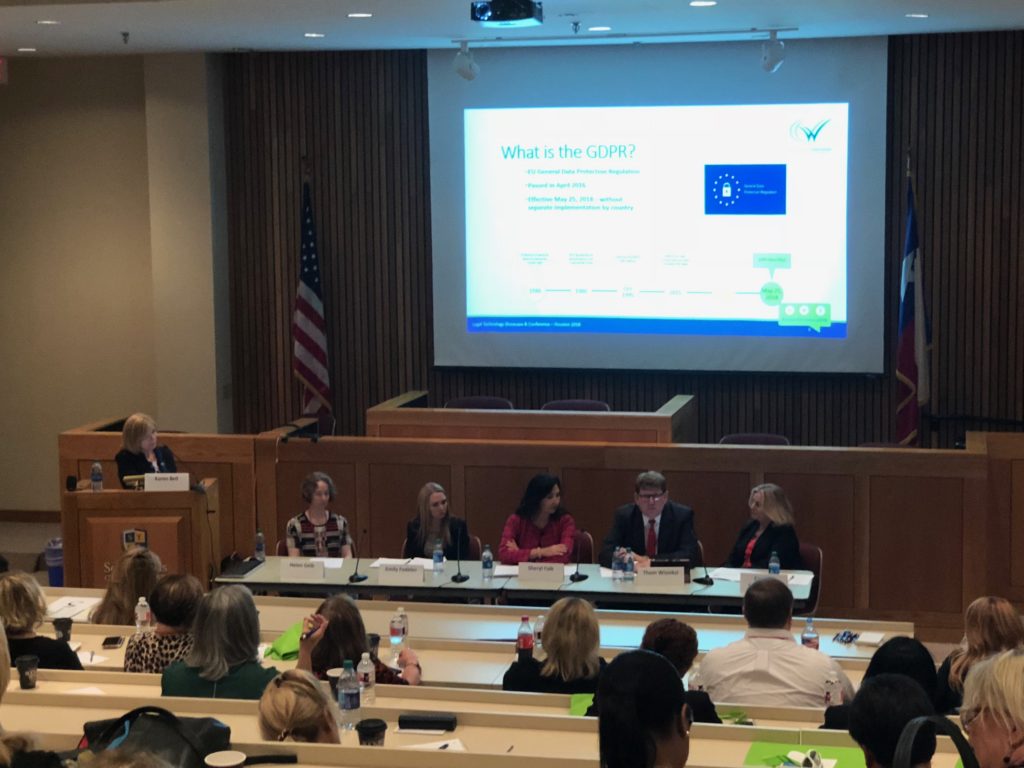
No GDPR violations/fines have been reported – yet.
After a box lunch, the Discovery Project Management: Navigating the Workflow (and budgets) session was conducted from 1:30pm-2:30pm, with Moderator: Scott Zimmerman, Manager of Automated Legal Services, Haynes & Boone and panelists Sarah Buckman, Discovery Consultant, Litigation Solutions, Inc.; Justin Henderson, Senior Project Manager, Consilio; George Mavris, Manager IT Appl – HR / Document Production / ECM, Citgo Petroleum; Jean Rivers, Director of Litigation Support, Berg & Androphy. This terrific panel did a great job of not only keeping the topic light and funny, but also involving the audience and getting them to share some of their experiences with regard to project management experiences. Here’s a picture of that panel:
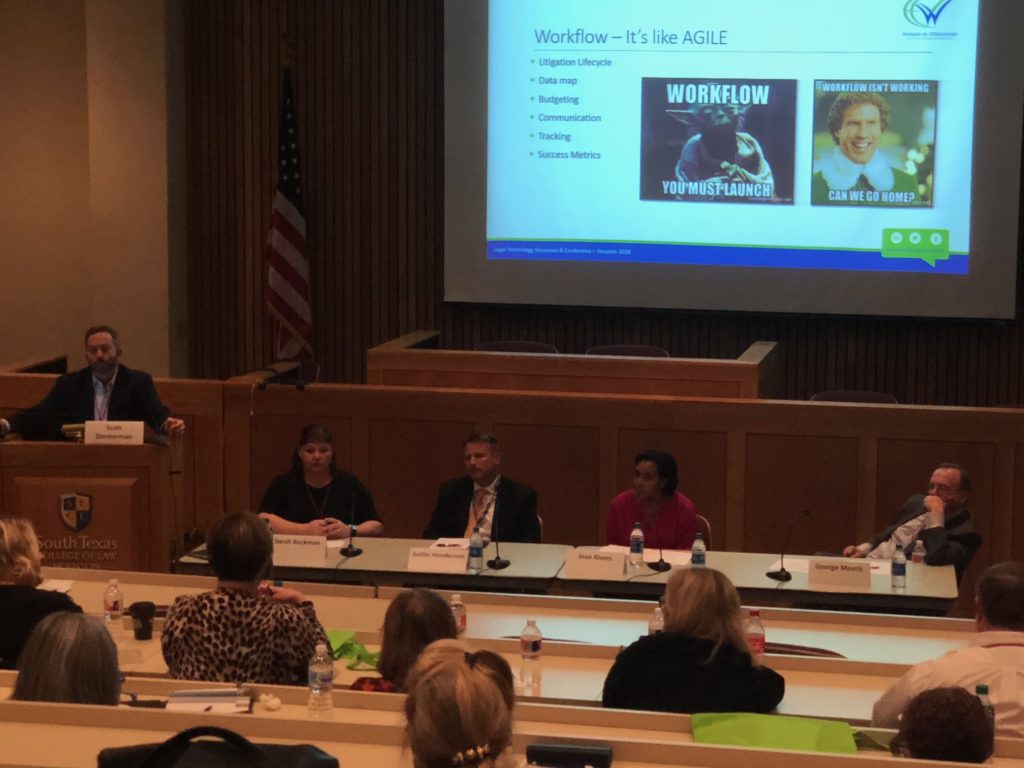
That leaves the panel I was on – AI and TAR for Legal: Use Cases for Discovery and Beyond – from 3:00pm-4:00pm. The panel was moderated by: Jackie Rosborough, Discovery & Trial Consultant (and Executive Director of Wie), with panelists May Tal Gongolevsky, Counsel, BakerHostetler; Ben Sexton, Director of eDiscovery, JND Legal Administration; Maren Strandevold, Solicitor, Haynes and Boone CDG, LLP and me. We discussed the ins and outs of AI and TAR, particularly related to the terminology (not everyone sees TAR the same way), the challenges to successful TAR projects (including types of cases, file types and other issues that are more or less conducive to TAR) and what attorneys should expect from TAR. Obviously, I couldn’t take a picture of our own panel, so you will have to take my word for it. :o)
The event was possible due to a number of sponsors (pictured below) including CloudNine, who was a Premier Platinum Sponsor and we were happy to participate! We look forward to next year’s event!
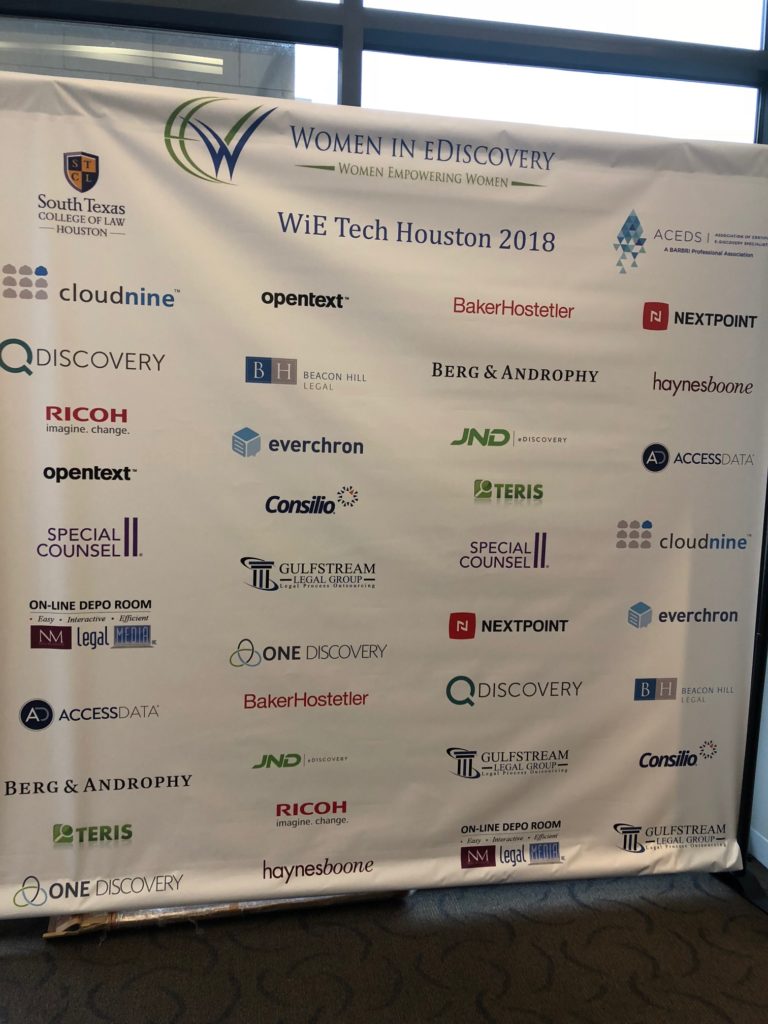
So, what do you think? Are you based in Houston? If so, you absolutely have to attend next year’s event! Please share any comments you might have or if you’d like to know more about a particular topic.
Sponsor: This blog is sponsored by CloudNine, which is a data and legal discovery technology company with proven expertise in simplifying and automating the discovery of data for audits, investigations, and litigation. Used by legal and business customers worldwide including more than 50 of the top 250 Am Law firms and many of the world’s leading corporations, CloudNine’s eDiscovery automation software and services help customers gain insight and intelligence on electronic data.
Disclaimer: The views represented herein are exclusively the views of the author, and do not necessarily represent the views held by CloudNine. eDiscovery Daily is made available by CloudNine solely for educational purposes to provide general information about general eDiscovery principles and not to provide specific legal advice applicable to any particular circumstance. eDiscovery Daily should not be used as a substitute for competent legal advice from a lawyer you have retained and who has agreed to represent you.



